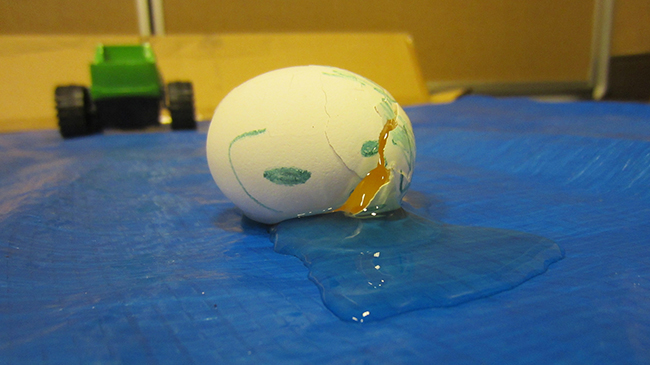By Steven Krolak
(NEW ALBANY, Ind.)—Learning the basic principles of science, technology, engineering and mathematics (STEM) fields is hard enough for K-12 students. Now imagine trying to do it in a language you barely understand.
Yet this is precisely what’s happening in schools across the country, as teachers cope with demands to provide STEM skills to classrooms with increasing numbers of English language learners (ELL).
In our region, Indiana and Kentucky have experienced tremendous growth in ELL populations over the past 20 years. In Indiana alone, their number rose by 20 percent between 2010 and 2015, while Kentucky is one of the ten states with the highest growth in this population—over 300 percent between 2000 and 2010, according to Lisa Hoffman, assistant professor of graduate studies in the School of Education at IU Southeast.
“Despite the growth in the number of students coming into our school who need support with learning English while they learn all their other subjects, teachers in Indiana and Kentucky are not required to have any training about how to work effectively with students who are still learning English,” Hoffman said.
STEM and English as a new language (ENL) are still largely considered separate universes, according to Hoffman, to the detriment of both.
“Language development is crucial for students’ understanding of STEM content,” Hoffman said.
To bring these universes closer together, she and colleague Dr. Alan Zollman, associate professor of secondary education, have been at work on strategies to prepare future and in-service STEM educators to teach ELLs.
Their goal is to move away from learning for STEM literacy—i.e, training students to learn terms for the specialized purposes of STEM–to using STEM literacy for overall learning, according to Zollman.
The two IU Southeast faculty demonstrated their approach at the summer conference of the Association of Teacher Educators in Louisville, Ky. earlier this month with the help of a toy car, a tilted piece of wood and an egg.

An egg and a toy truck play their parts in demonstrating Newton’s laws of motion.
The egg was placed in the toy car on an inclined plane, the car was released and rolled down the ramp, where it crashed into a barrier, sending the egg flying, landing and ultimately breaking. Cue mess.
While the activity was not new, its application in this context is innovative. It created an event with STEM relevance from which language learning can flow.
On a STEM level, the exercise illustrated three of Isaac Newton’s three laws of motion.
On an ENL level, it gave students concrete context for understanding concepts like gravity, forces in motion and at rest, and incline planes even without understanding all the language involved.
Thirdly, it connected with students’ real world experience of the need for wearing a helmet while bicycling. This connection is a bridge to understanding the culture in which the students live, a necessary part of what teachers need to know about their ELLs, regardless of their specialty discipline.
This exercise and others like it can satisfy requirements for ELLs to learn three tiers of vocabulary: everyday social terms, common words relating to school work, and academic STEM-related content terminology with precise discipline-specific definitions.
“In this activity, students first predict, then observe and experiment, then reflect and delve for a deeper understanding of STEM and ELL literacy,” Hoffman and Zollman have written.
The experiment reinforced the point that students of STEM fields and ENL share basic needs, including opportunities to hear and use language to express their STEM understanding, rich contexts and hands-on participation to help illustrate STEM concepts, and an acceptance of what Zollman referred to as “flawed language”—common nonscientific language that works to guide students toward more precise meanings.
While the egg-rolling exercise was entertaining, the faculty hope that the presentation and the serious scholarship behind it will help STEM educators support language development among ELLs and literacy among all students.
“An ELL student may speak with an accent, but this does not mean that the student thinks with an accent,” Hoffman said.
The presentation itself was the distillation of a new paper by Hoffman and Zollman, “What STEM teachers need to know and do for English-language learners (ELLs): Using literacy to learn.” The paper has been accepted for publication in the Journal of STEM Teacher Education.


